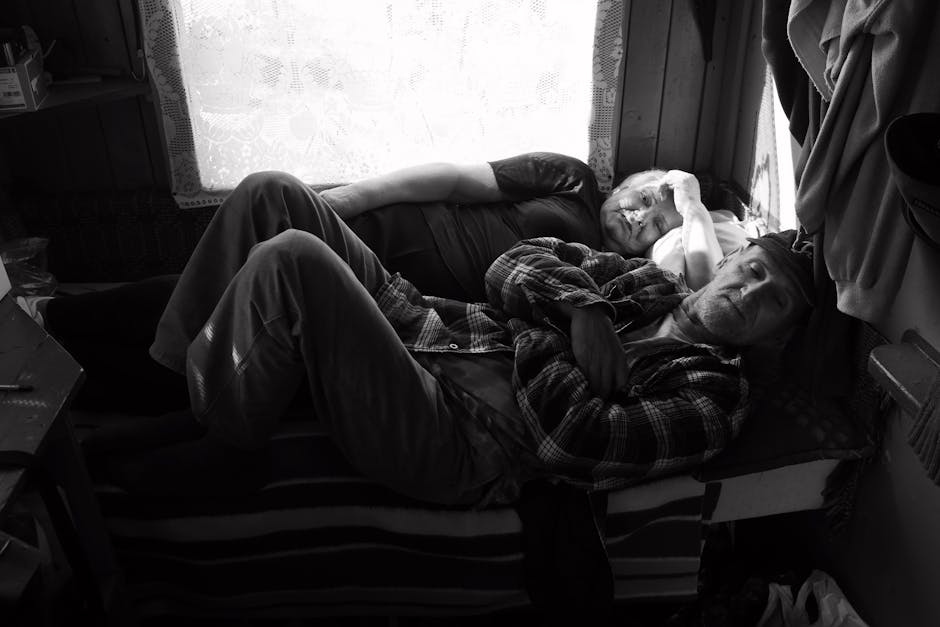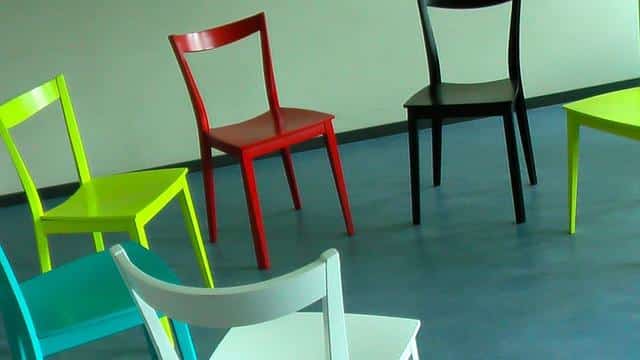Do you ever lay awake at night, staring at your ceiling and counting the minutes until your alarm goes off? Well, before you start guzzling chamomile tea and investing in a collection of lavender-scented candles, consider this: what if the answer to your sleep woes wasn’t in a pill bottle, but in a glowing red light? That’s right, folks, we’re talking about the wonders of red light therapy for getting the beauty sleep you’ve been dreaming of (literally). So grab your eye mask and get ready to journey into the world of illuminated slumber, because we’ve got some illuminating insights to share with you.
Understanding Red Light Therapy for Sleep Improvement
So, you’re desperate for a good night’s sleep and you’ve heard about this magical thing called Red Light Therapy. Don’t worry, it’s not some kind of alien technology that will beam you up to another planet (although that does sound kind of cool).
Basically, Red Light Therapy involves exposing your body to red or near-infrared light to help improve your sleep. It’s like giving yourself a little natural light show before bed, minus the disco ball and dance music.
Think of it as a gentle nudge to your body’s internal clock, telling it that it’s time to wind down and get ready for some serious snooze time. It’s like your very own bedtime story, but instead of words, it’s light. Who knew light could be so soothing?
So, if counting sheep just isn’t cutting it and you’re tired of tossing and turning all night, maybe it’s time to give Red Light Therapy a try. Who knows, you might just find yourself drifting off to dreamland faster than you can say “goodnight”.

The Science Behind Red Light Therapy’s Effect on Circadian Rhythms
So, you might be wondering how red light therapy actually affects your circadian rhythms. Well, let me break it down for you in a way even a sleep-deprived toddler could understand.
First off, red light therapy helps regulate your body’s internal clock by influencing the production of hormones that control sleep and wake cycles. This means that instead of dragging yourself out of bed in the morning feeling like a zombie, you’ll be prancing around like a caffeinated unicorn. Thanks, science!
Also, red light therapy can help reset your circadian rhythms by mimicking natural sunlight. This is basically like giving your body a gentle nudge in the right direction, telling your brain, “Hey, it’s time to be awake and alert now!” So say goodbye to those late-night Netflix binges that leave you tossing and turning until the birds start chirping.
And if all that wasn’t convincing enough, studies have shown that red light therapy can improve the quality of your sleep by reducing the amount of time it takes you to fall asleep and decreasing the number of times you wake up during the night. So basically, you’ll be snoozing like a baby, but without the diaper changes. Win-win!

insomnia-and-restless-sleep”>Benefits of Red Light Therapy for Insomnia and Restless Sleep
When counting sheep just isn’t cutting it anymore, it might be time to consider the magic of red light therapy for your insomnia woes. This cutting-edge treatment can help regulate your sleep patterns and provide much-needed relief for those restless nights.
One of the key benefits of red light therapy is its ability to increase the production of melatonin, the hormone responsible for regulating sleep. By exposing yourself to red light waves, you can kickstart your body’s natural melatonin production and help ease your way into a peaceful slumber.
Not only does red light therapy help with falling asleep, but it can also improve the overall quality of your sleep. By reducing the amount of time you spend tossing and turning, you can wake up feeling more refreshed and ready to take on the day.
So say goodbye to counting sheep and hello to the world of red light therapy. With its ability to regulate melatonin production and improve sleep quality, it might just be the solution you’ve been dreaming of (literally).

How to Incorporate Red Light Therapy into Your Bedtime Routine
So you’ve heard about the wonders of red light therapy and you want to incorporate it into your bedtime routine? Well, you’ve come to the right place! Red light therapy is a great way to relax and unwind before bed, helping you drift off into dreamland faster than ever. Here are some tips on how to seamlessly blend red light therapy into your nightly ritual:
- Find the Perfect Spot: Set up your red light therapy device next to your bed for easy access. You want it to be within arm’s reach so you can easily turn it on and off without having to get out of bed.
- Dim the Lights: Before you start your red light therapy session, dim the overhead lights in your room to create a calming atmosphere. You want to create a cozy environment that will make you feel relaxed and ready for sleep.
- Set the Mood: Put on some soothing music or a guided meditation to enhance the calming effects of the red light therapy. This will help you unwind and let go of the stresses of the day, setting the stage for a restful night’s sleep.
With these simple tips, you’ll be able to seamlessly incorporate red light therapy into your bedtime routine and experience all the amazing benefits it has to offer. So go ahead, give it a try and get ready to drift off into dreamland in no time!

Studies and Research Supporting the Use of Red Light Therapy for Better Sleep
Red light therapy has been gaining popularity as a natural solution for improving sleep quality. Studies have shown that exposure to red light before bedtime can have a significant impact on regulating our circadian rhythms and promoting relaxation. Here are some key findings that support the use of red light therapy for better sleep:
- Increased Melatonin Production: Research suggests that red light exposure can stimulate the production of melatonin, the hormone that governs our sleep-wake cycle. This can help individuals fall asleep faster and experience a deeper, more restful slumber.
- Improved Sleep Quality: Studies indicate that utilizing red light therapy can enhance the overall quality of sleep by increasing the amount of time spent in restorative deep sleep stages. This can lead to feeling more refreshed and rejuvenated upon waking up in the morning.
- Reduced Insomnia Symptoms: Preliminary research has shown promising results in using red light therapy to alleviate symptoms of insomnia, such as difficulty falling asleep or staying asleep throughout the night. This non-invasive treatment option may offer a safe and effective alternative to traditional sleep aids.
Overall, the evidence supporting the benefits of red light therapy for improving sleep is growing. Whether you struggle with occasional sleep disturbances or chronic insomnia, incorporating red light therapy into your bedtime routine could be the key to unlocking a better night’s rest. So, why not give it a try and say goodbye to sleepless nights once and for all!
Choosing the Right Red Light Therapy Device for Maximum Effectiveness
When it comes to choosing the right red light therapy device, it can be quite overwhelming with so many options on the market. Fear not, dear reader! I am here to guide you through the process with some helpful tips and tricks.
First and foremost, you want to make sure you pick a device that is the right size for your needs. If you’re looking to target specific areas of your body, a handheld device might be the way to go. However, if you want to cover larger areas, a panel device would be more suitable. Remember, size does matter!
Next, you’ll want to consider the wavelength of the red light. Different wavelengths have different benefits, so it’s important to choose one that aligns with your specific goals. For example, if you’re looking to reduce inflammation, you’ll want a device with a wavelength between 630-700nm. It’s all about finding the perfect match!
Lastly, don’t forget to check the power output of the device. This will determine how effective the therapy will be. Look for a device that offers enough power to penetrate deep into your skin for maximum results. Trust me, you’ll thank yourself later!
FAQs
Can red light therapy help me fall asleep faster?
Absolutely! Red light therapy helps regulate your body’s natural sleep-wake cycle, making it easier for you to drift off into dreamland without counting sheep.
Will red light therapy improve the quality of my sleep?
Sleeping like a baby is no longer just a dream! Red light therapy can help improve the quality of your sleep by increasing the production of melatonin, the sleep hormone. Say goodbye to tossing and turning all night!
How long do I need to use red light therapy before seeing results?
Patience is a virtue, my friend! Consistency is key when it comes to red light therapy. It may take a few weeks of daily use before you start noticing a significant difference in your sleep patterns.
Is red light therapy safe to use for enhancing sleep?
Rest easy, my sleepy friend! Red light therapy is completely safe and non-invasive. It’s like giving your body a gentle nudge in the right direction towards a deep and restful slumber.
Can I use red light therapy in conjunction with other sleep aids?
Mixing and matching is all the rage these days! You can definitely use red light therapy alongside other sleep aids like white noise machines or cozy blankets for the ultimate sleep-enhancing experience.
How does red light therapy actually work to improve sleep?
It’s all about those magical wavelengths of light! Red light therapy stimulates the production of ATP in your cells, boosting energy levels and promoting relaxation, making it easier for you to drift off into dreamland. Say hello to beauty sleep like never before!
—
Sweet Dreams Are Made of Red Light Therapy
Well, there you have it, folks! Who knew that the key to a good night’s sleep was shining a little red light on yourself? Don’t be surprised if you start seeing red in a whole new light from now on.
So go ahead, give red light therapy a try and say goodbye to tossing and turning all night long. Here’s to brighter days and even brighter nights!

